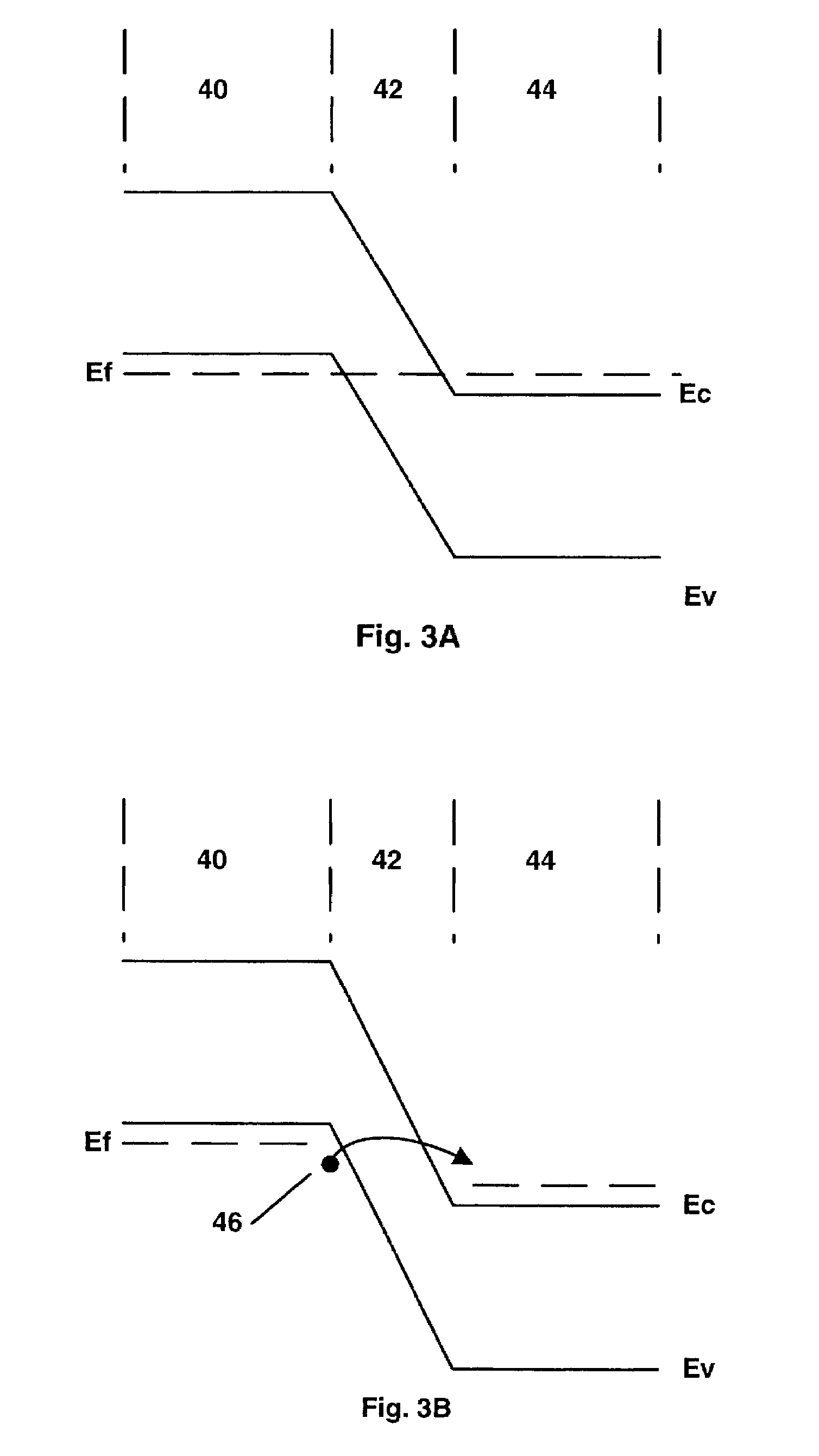Inverted light emitting diode on conductive substrate
a technology of light-emitting diodes and conductive substrates, which is applied in the direction of semiconductor/solid-state device manufacturing, semiconductor devices, electrical apparatus, etc., can solve the problems of preventing most researchers from producing commercially successful devices, obtaining the necessary pure single crystal of silicon carbide, and the typical epitaxial or implanted layer. , to achieve the effect of increasing current spreading, increasing conductivity, and increasing brightness
- Summary
- Abstract
- Description
- Claims
- Application Information
AI Technical Summary
Benefits of technology
Problems solved by technology
Method used
Image
Examples
Embodiment Construction
[0029]The present invention may be illustrated by reference to the embodiments set forth herein. According to a first embodiment of the invention, a light emitting diode broadly designated at 10 is illustrated in FIG. 1. As will be described herein, by various combinations and doping of Group III nitride materials in the active layer, such a diode can be tuned to emit in many portions of the physical spectrum, but for a number of purposes, the diode 10 is often most valuable in its capability to light in the ultraviolet (UV) to green portion of the electromagnetic spectrum. p As illustrated in FIG. 1, the diode 10 is formed on an n-type layer or substrate 11 which is preferably silicon carbide, but which may be bulk gallium nitride or any other suitable conductive n-type substrate. In preferred embodiments, the substrate is a single crystal silicon carbide substrate having a polytype selected from the group consisting of 3C, 4H, 6H and 15R. In a most preferred embodiment, the substr...
PUM
 Login to View More
Login to View More Abstract
Description
Claims
Application Information
 Login to View More
Login to View More - R&D
- Intellectual Property
- Life Sciences
- Materials
- Tech Scout
- Unparalleled Data Quality
- Higher Quality Content
- 60% Fewer Hallucinations
Browse by: Latest US Patents, China's latest patents, Technical Efficacy Thesaurus, Application Domain, Technology Topic, Popular Technical Reports.
© 2025 PatSnap. All rights reserved.Legal|Privacy policy|Modern Slavery Act Transparency Statement|Sitemap|About US| Contact US: help@patsnap.com



